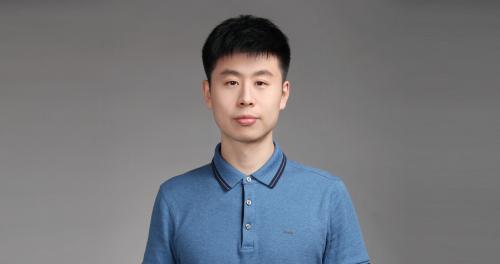師資
斯坦福大學(xué)電子工程系的博士,,2011年獲得清華大學(xué)自動化學(xué)士學(xué)位,,同時(shí)榮獲清華大學(xué)優(yōu)秀畢業(yè)生,并于2013年及2016年分別獲得了斯坦福大學(xué)電子工程碩士學(xué)位和博士學(xué)位,。在斯坦福大學(xué)期間曾參與了斯坦福大學(xué)PBL Lab(斯坦福問題,、項(xiàng)目、產(chǎn)品,、工藝,、人 學(xué)習(xí)實(shí)驗(yàn)室),AIR lab(斯坦福智能環(huán)境研究實(shí)驗(yàn)室),,CDR CARS(斯坦福設(shè)計(jì)研究中心) ,,CHIME lab(斯坦福人類和媒體交互實(shí)驗(yàn)室)等多個(gè)實(shí)驗(yàn)室或者研究中心的研究,例如基于智能家居傳感器拓?fù)淠P鸵约斑\(yùn)動熱點(diǎn)的人類行為捕捉,、基于腦電波的國際會議效率以及專注度的評價(jià)模型,、全球首個(gè)機(jī)動車自動駕駛仿真軌道設(shè)計(jì)與搭建等多個(gè)項(xiàng)目,并以主要合伙人的身份創(chuàng)立多家公司,。未來的研究方向研究方向主要為基于數(shù)據(jù)挖掘,、機(jī)器學(xué)習(xí)的行為識別與理解在智能環(huán)境、金融,、工業(yè)等方面的研究,。
研究領(lǐng)域:
◆ 基于數(shù)據(jù)挖掘和機(jī)器學(xué)習(xí)的行為識別與理解
◆ 基于人工智能的系統(tǒng)建模與優(yōu)化
◆ 基于大數(shù)據(jù)的制造系統(tǒng)關(guān)系性能分析與決策
工作經(jīng)歷:
◆ 11/2018,南方科技大學(xué)機(jī)械與能源工程系,,科研助理教授
◆ 12/2017 創(chuàng)始人 矩陣未來(北京)科技有限公司公司由中信集團(tuán)百萬人民幣投資并由中信雙創(chuàng)孵化,,公司主要方向聚焦于大數(shù)據(jù)分析、整合和量化決策生成技術(shù)的研發(fā),,并將該技術(shù)應(yīng)用于能源和中小企業(yè)征信等不同垂直傳統(tǒng)行業(yè)的現(xiàn)有場景
使用Neurosky收集的真實(shí)國際會議的參與者的腦電波數(shù)據(jù)構(gòu)建了心理工作負(fù)荷的混合高斯模型(mental workload gaussian mixture model),;并使用該模型完成了對國際會議參與者的群體心理行為的可視化研究與解讀
參與了谷歌熱全球網(wǎng)絡(luò)計(jì)劃(Project Loon)
主要研究方向?yàn)榛赑IR傳感器網(wǎng)絡(luò)的人類行為軌跡以及行為熱點(diǎn)建模分析,生活模式提取和解讀,,異常事件檢測與預(yù)警
設(shè)計(jì)并參與自動駕駛汽車的駕駛員心理研究課題(Auto Driving Car Project), 基于EEG和眼球追蹤數(shù)據(jù)對人在自動駕駛模擬器中的行為反應(yīng)時(shí)間序列進(jìn)行建模和解讀,。
基于RFID打卡數(shù)據(jù)的建筑工地多個(gè)項(xiàng)目方效率評估分析系統(tǒng)的研究和搭建,并使用該系統(tǒng)完成了對舊金山大學(xué)醫(yī)院建筑項(xiàng)目的來自上百個(gè)承包商的建筑工人的效率跟蹤和評估
參與并負(fù)責(zé)了“豐田自動駕駛司機(jī)行為研究(Toyota Automation Driving Study)”項(xiàng)目,,設(shè)計(jì)并搭建了全球首個(gè)360度屏幕豐田自動駕駛行為研究原型和模擬軌道
通過使用FitBit,、Neurosky和Kinect收集了跨國遠(yuǎn)程會議多個(gè)參與方的心率、腦電波和上半身行為時(shí)間同步數(shù)據(jù),;并使用收集的數(shù)據(jù)構(gòu)建了參會者的參會效率,、專注度和參與程度評估模型學(xué)習(xí)經(jīng)歷:
◆ 2016年3月,,美國斯坦福大學(xué)電子工程專業(yè),博士,。
◆ 2013年6月,,美國斯坦福大學(xué)電子工程專業(yè),碩士,。
◆ 2011年6月,,清華大學(xué)自動化專業(yè), 學(xué)士。
◆ 09/2011 斯坦福大學(xué)電子工程系研究生獎學(xué)金(Graduate Department Fellowship in Electrical Engineering)
◆ 06/2011 本科畢業(yè)論文“液壓式折彎機(jī)控制系統(tǒng)的設(shè)計(jì)和實(shí)現(xiàn)”被評為清華大學(xué)優(yōu)秀學(xué)術(shù)論文, 并入選清華大學(xué)學(xué)生優(yōu)秀作品數(shù)據(jù)庫OAPS
◆ 06/2011 獲得清華大學(xué)自動化系優(yōu)良畢業(yè)生
◆ 10/2010 獲得清華大學(xué)科學(xué)學(xué)術(shù)三等獎學(xué)金
◆ 10/2010 獲得國家獎學(xué)金
◆ 04/2010 獲得清華大學(xué)第二十八屆“挑戰(zhàn)杯”二等獎
◆ 09/2009 獲得清華大學(xué)綜合優(yōu)秀獎學(xué)金
◆ 09/2008 獲得清華大學(xué)自動化系優(yōu)秀一等獎學(xué)金
◆ [Journal Paper] Tongda, Zhang, R., Fruchter and M., Frank, “Are They Paying Attention? A Model-Based Method to Identify Individuals' Mental States”, Computer, IEEE, 2017(http://ieeexplore.ieee.org/abstract/document/7888422/)
◆ [Dissertation] Zhang, Tongda. Pattern Learning in Smart Homes and Offices Using Motion Sensor and Mind Wave Data: Unsupervised Approaches. Diss. Stanford University, 2016.(https://searchworks.stanford.edu/view/11616852)
◆ [Journal Paper] Tongda Zhang, W. Fu, J. Ye, and M. Fischer, “Learning movement patterns of the occupant in smart home environments: an unsupervised learning approach.”, Journal of Ambient Intelligence and Humanized Computing:1-14 2016 (http://link.springer.com/article/10.1007/s12652-016-0367-2)
◆ [Book Chapter] Mohamed E., Tongda Zhang, Wilfried Philips and Hamid Aghajan, A Data Fusion Approach for Identifying Lifestyle Patterns in Elderly Care, Active and assisted living: technologies and applications, ISBN:978-1-84919-987-2, IET 2016(http://www.theiet.org/resources/books/healthcare/acassliving.cfm)
◆ [Journal Paper] Sun Xiao, Tongda Zhang, Yueting Chai and Yi Liu, “Localized Ambient Solidity Separation (LASS) Algorithm Based Computer User Segmentation”, Computational Intelligence and Neuroscience,2015,Volume 2015 (2015), Article ID 829201 (http://dx.doi.org/10.1155/2015/829201)
◆ [Conference Paper] Johns, M., Miller, D.B., Sun, A.C., Baughman, S., Zhang, T., \& Ju, W. “The Driver has Control: Exploring Driving Performance with Varying Automation Capabilities”, Proc. Driving Assessment 15 June 22-25, 2015 Salt Lake City, UT(http://drivingassessment.uiowa.edu/sites/default/files/DA2015/papers/060.pdf)
◆ [Journal Paper] Tongda Zhang, Xiao Sun, Yueting Chai and Hamid Aghajan, “A look at task-switching and multi-tasking behaviors: From the perspective of the computer usage among a large number of people”, Computers in Human Behavior}, 2015, DOI: 10.1016/j.chb.2015.03.012 (http://www.sciencedirect.com/science/article/pii/S0747563215001983)
◆ [Journal Paper] Tongda Zhang, K.B. Wong and Hamid Aghajan, “Concurrent activation events based trajectory propagation in smart environments ”, Journal of Ambient Intelligence and Humanized Computing, Springer, 2014, DOI: 10.1007/s12652-014-0240-0 (http://link.springer.com/article/10.1007\%2Fs12652-014-0240-0)
◆ [Book Chapter] K.B. Wong, Tongda Zhang, and Hamid Aghajan, “Data Fusion with a Dense Sensor Network for Anomaly Detection in Smart Homes”, Human Behavior Understanding in Networked Sensing, Springer, ISBN:978-3-319-10806-3 (Print) 978-3-319-10807-0 (Online), 2014(http://link.springer.com/book/10.1007\%2F978-3-319-10807-0)
◆ [Journal Paper] Tongda Zhang, Xiao Sun, Yueting Chai and Hamid Aghajan, “Human Computer Interaction Activity Based User Identification ”, International Journal of Machine Learning and Computing, Vol. 4, No. 4, August 2014. DOI: 10.7763/IJMLC.2014.V4.436
◆ [Journal Paper] K.B. Wong, Tongda Zhang, and Hamid Aghajan, “Extracting Patterns of Behavior from a network of Binary Sensors”, Journal of Ambient Intelligence and Humanized Computing, Springer}, 2014, DOI:10.1007/s12652-014-0246-7 (http://link.springer.com/article/10.1007/s12652-014-0246-7)
◆ [Book Chapter] K.B. Wong, Tongda Zhang, and Hamid Aghajan, “Inference of Wellness Indicators and Patterns of Behavior in Elderly Care Applications using Long-Term Sensor Network Observations”, Sensor Networks for Sustainable Development, CRC Press},ISBN:9781466582064, 2014(http://www.crcpress.com/product/isbn/9781466582064)
◆ [Journal Paper] Tongda Zhang, Haomiao Jiang, Zhouxiao Bao, and Yingfeng Zhang, "Characterization and Edge Sign Prediction in Signed Networks," Journal of Industrial and Intelligent Information, Vol. 1, No. 1, pp. 19-24, March 2013.doi:10.12720/jiii.1.1.1924(http://www.jiii.org/uploadfile/2013/0510/20130510041925601.pdf)
◆ [Journal Paper] Zhang, Y., Xu, F., Zhang, Tongda. and Wu, C., "Application of electro-mechanical impedance sensing technique for online aging monitoring of rubber" Intelligent Automation & Soft Computing,18.8 (2012): 1101-1109(http://www.tandfonline.com/doi/abs/10.1080/10798587.2008.10643314)
◆ [Book Chapter] Zhang, Yuxiang, Liuyi Ma, Tongda Zhang, and Fuhou Xu, “Tracking of Human Arm Based on MEMS Sensors”, Computer and Computing Technologies in Agriculture IV, pp. 597-606. Springer Berlin Heidelberg, 2011 DOI:10.1007/978-3-642-18336-2-73ISBN:9783642183355 (http://link.springer.com/chapter/10.1007/978-3-642-18336-2_73)
◆ [Conference Paper] Tongda Zhang, Liuyi Ma “Natural interaction technology based on the union of hand and writing-pen”, The 1st International Conference on Computer Technology and Application and Computer Education of the University and college (ICTAE 2010)2010

